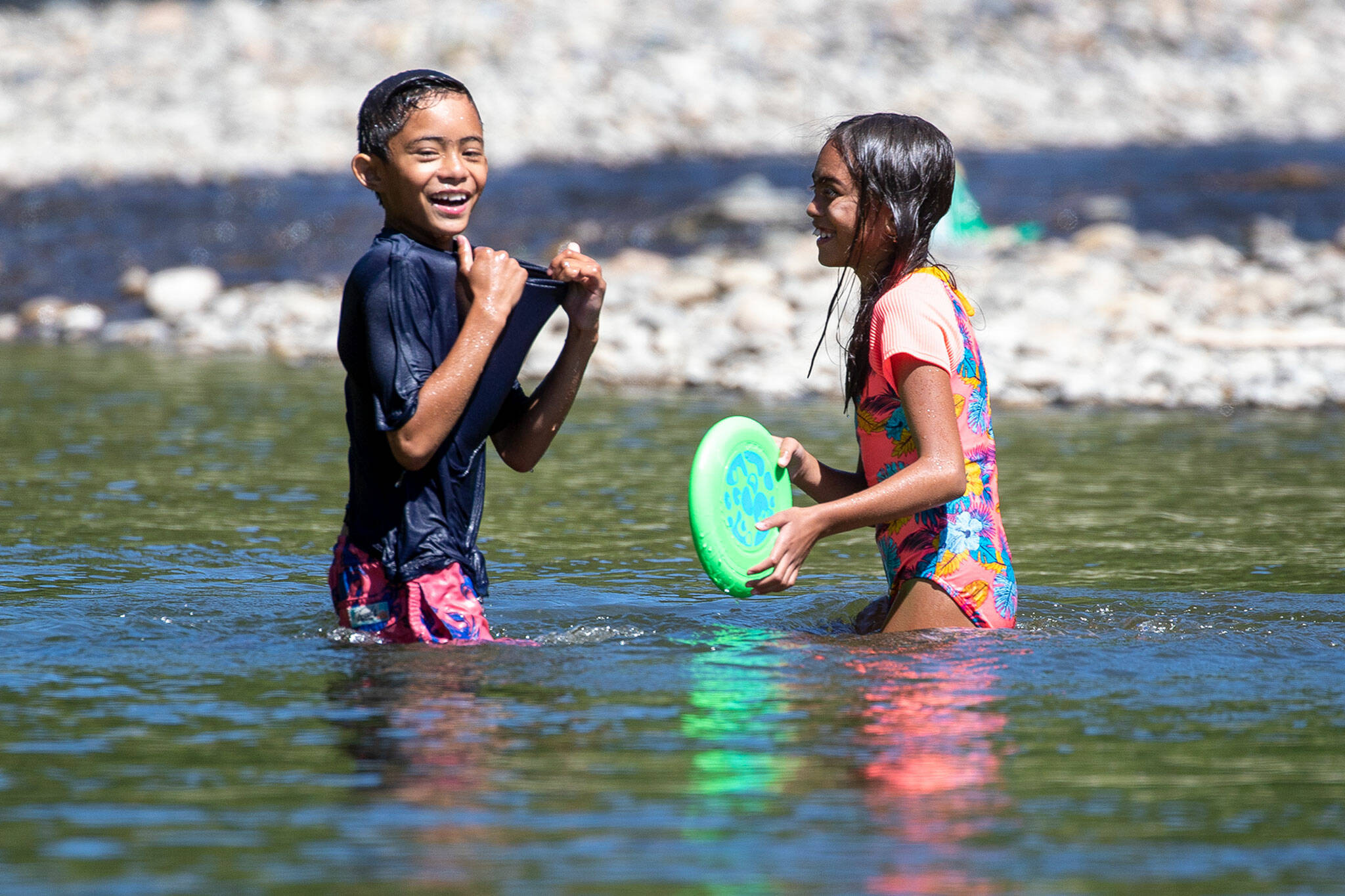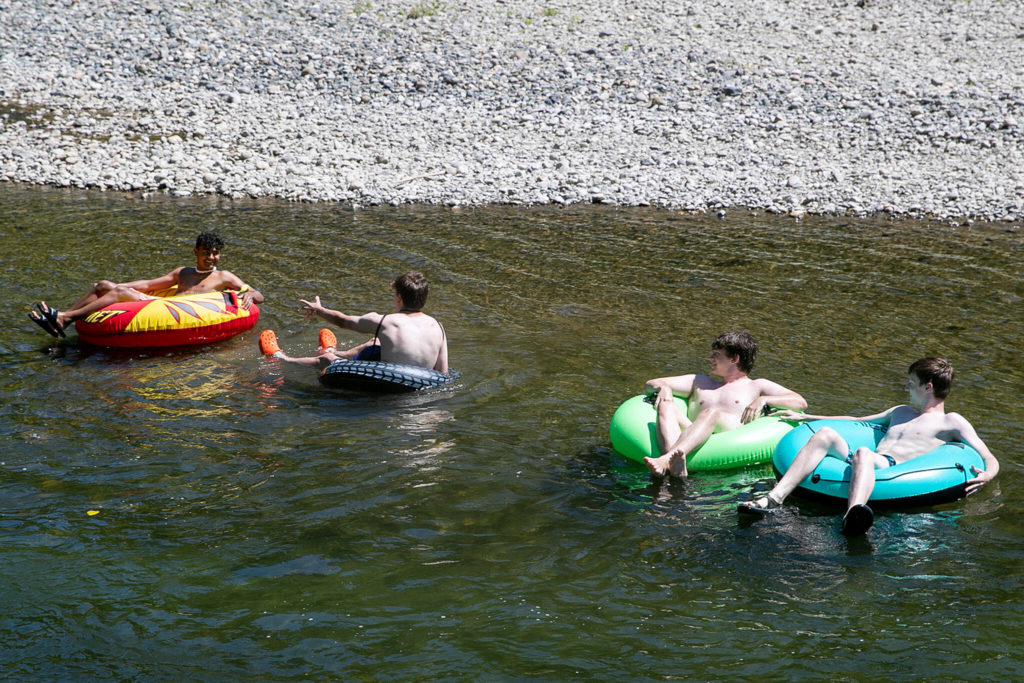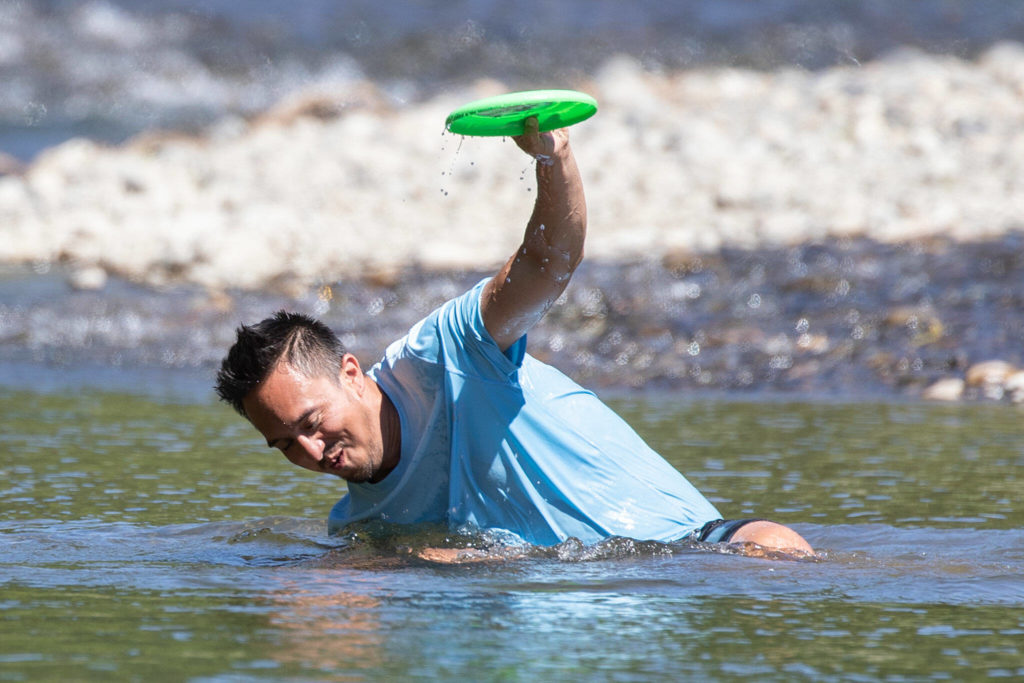DARRINGTON — It’s time to hydrate and head to your local swimming hole or library.
Temperatures could near or top 90 degrees by next week across Snohomish County. Tuesday through Thursday is forecast to be the hottest.
It’s not going to come close to last year’s extreme heat, but people should have a plan to stay cool, said Matthew Cullen, meteorologist for the National Weather Service in Seattle.
Twenty-six cooling stations will be open around Snohomish County for those without air conditioning, according to the Snohomish County public safety hub.
Most Sno-Isle Library branches will be open for cooling during usual business hours, with the exception of the Arlington, Edmonds and Mill Creek libraries. The open libraries will operate their regular air conditioning systems.
Community centers including the Monroe, Lake Stevens and Darrington senior centers and the Carl Gipson Center in Everett; the Edmonds Waterfront Center; and the Stilly Valley Center in Arlington are also listed as places opening their doors to folks looking to stay cool this summer.
As temperatures climb, the Snohomish Health District wants people to check in on their vulnerable neighbors, the elderly, and those with limited mobility or without access to cool shelter.
“Make sure people are cool and not showing signs of heat-related illness,” said spokesperson Kari Bray.
Heat stroke may materialize as a body temperature of 103 degrees or higher; skin that’s hot, red, dry or damp; confusion or dizziness; and a strong fast pulse. If you see someone with those symptoms, call 911, Bray said.
Someone experiencing heat exhaustion may be sweating heavily with cold clammy skin, and they may have a fast but weak pulse. People showing these symptoms should head to a cool place and hydrate. If symptoms last over an hour, seek medical help.
Hundred-degree weather is not uncommon in inland places in Snohomish County like Darrington, where it could get that hot next week. In the county, summer days tend to be warmer the further you get from Puget Sound. City officials are gearing up to support residents next week.
“If you need to seek out shelter, reach out to the fire district or the City of Darrington,” Mayor Dan Rankin said.
Typically Darrington residents, many of whom don’t have air conditioning, make for the Sauk River on a hot day, Rankin said. Those waters may look inviting, but they can be deadly.
Plunging into water as warm as 60 degrees can trigger “cold shock.” According to the state Department of Health, cold shock can cause labored breathing or hyperventilation, rapid heart rate, high blood pressure and muscle weakness.
“The number one thing that we emphasize is wear a life jacket,” said Peter Mongillo, spokesperson for Snohomish Regional Fire and Rescue. “Rivers always run cold. And when you think of rivers, that water was snow less than 24 hours ago.”
That applies to all bodies of water, he said. Most public beaches in Snohomish County don’t have lifeguards.
Drownings are preventable, Mongillo said. Learn how to swim, avoid drinking or using drugs before taking a dip, and keep a lifejacket on.
“People say it doesn’t look cool, but you look much cooler alive than being a headline on the news,” he said. “So just wear a life jacket and you’ll come home safely.”
The Darrington mayor said he especially wants tourists to remember to be safe when recreating in the water or the woods in rural Snohomish County.
“Our fire departments and our folks are all volunteer, primarily,” Rankin said. During a heat wave, “it can get very difficult to take care of all the people. So go prepared. Don’t hesitate to call us when you’re in trouble. But, go prepared for the conditions.”
Many people assume it’s safe to jump into alpine lakes on a hot day or after a long hike through the wilderness. But this isn’t always the case, said U.S. Forest Service spokesperson Colton Whitworth.
“We’ve been seeing a lot of folks going into shock from jumping into the colder waters,” Whitworth said. “Some people assume that, because it’s a lake and not a river, it will be warm enough to swim. That can lead to danger.”
After a damp spring and an unseasonably cool June, the Department of Natural Resources is anticipating an “abnormally” calm wildfire season, said Thomas Kyle-Milward, a Department of Natural Resources wildfire spokesperson. So far, it has been the quietest fire season in 11 years.
As this heat wave rolls through, those recreating outdoors should still exercise caution. The DNR keeps an updated statewide wildfire map online.
In Washington, 85% of wildfires in state and private forests are human-caused. Of that number, about 52% are determined to have been negligently or intentionally started, according to the DNR.
Riding an ATV over dry grass or lighting a campfire near low-hanging branches could “kick out a spark that could turn into something a lot bigger,” Kyle-Milward said.
If you want to cook s’mores in your yard, first check your local burn regulations. Make sure there’s no fuel nearby like grass, shrubs or timber, and try to find a spot protected from wind. If you’re camping on public lands, make sure you keep your fire contained to a designated fire pit or fire ring. Keep flammable gear or brush at least 15 feet away from the fire.
The DNR has a regularly updated online map of regional outdoor burn bans and wildfire danger in Washington.
Those who see illegal burns or smoke in outdoor areas can call the 24-hour statewide reporting number at 866-211-6284.
Just because it has been a light fire activity year doesn’t mean it’s time to get complacent.
“We’ve seen fire seasons abruptly flip a switch,” Kyle-Milward said.
In 2020, less than 200,000 acres burned by early September, he said. That’s a relatively low number. Then, over 500,000 acres burned over Labor Day weekend.
“So don’t be the spark,” Kyle-Milward said.
Isabella Breda: 425-339-3192; isabella.breda@heraldnet.com; Twitter: @BredaIsabella.
Ellen Dennis: 425-339-3486; ellen.dennis@heraldnet.com; Twitter: @reporterellen.
Talk to us
> Give us your news tips.
> Send us a letter to the editor.
> More Herald contact information.



























